Best Monitors for Trading in 2023: A Comprehensive Guide

In the fast-paced world of stock trading, having the right tools can make all the difference in your success.
One such essential tool is a high-quality trading monitor. With the ever-evolving technology landscape, 2023 brings a new array of best monitors for trading designed to enhance your experience.
In this post, we will explore the best monitor for trading, discuss their key features, and discuss the crucial factors you should consider before making a decision. This will allow you to choose the best product for you and help you in setting up your trading workspace.
Are you ready to elevate your trading game?
Let’s dive in!
Introduction to Best Monitors for Trading
Here are the top contenders for the best trading monitor in 2023:
- Best Overall: Dell S3222HG 32-inch 165Hz Curved Monitor
- Best for Fast Refresh Rate: ViewSonic XG2431 24” Monitor
- Best Curved Monitor: Samsung CF396 Curved LED Monitor
- Best High-Performance Monitor: BenQ Mobiuz EX3410R
- Best Ultrawide Monitor: LG 34” Screen
A top-notch monitor can significantly enhance your trading experience. Some features that set the best trading monitors apart from standard ones include:
- High-resolution screen
- Ergonomic design
- Fast refresh rate
- Multiple connectivity options
Whether you’re a seasoned stock trader or just starting. Investing in quality stock trading monitors can make all the difference in your ability to analyze market data, spot trends, and make informed decisions.
1. Dell S3222HG 32-inch 165Hz Curved Monitor
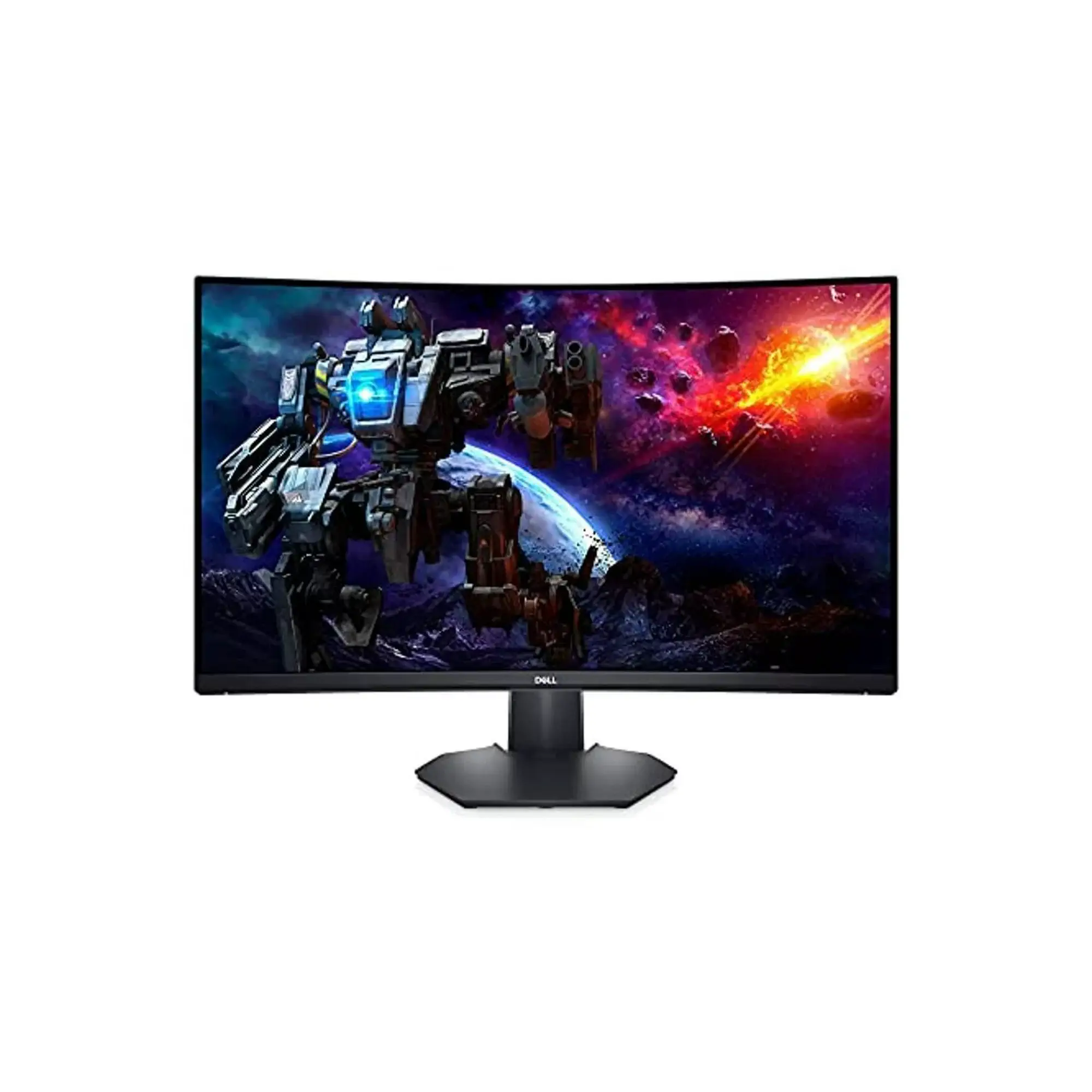
Price: $279
Specifications:
- 32-inch widescreen
Pros:
- High resolution
- Sleek design
- Dependable performance
- Multiple connection options
Cons:
- Difficult to connect to older Mac computers via USB-C
Key Benefits:
- High resolution for crystal-clear visuals
- Slim design that saves desk space without compromising image quality
- Reliable performance and multiple connectivity options
However, it’s worth noting that some users have reported difficulties connecting the monitor to older Mac computers via USB-C. Despite this minor drawback, the Dell Flat Screen remains a top contender in the world of trading monitors.
Rating:
- Resolution: 4.5/5
- Design: 4/5
- Performance: 4.5/5
- Connectivity: 4/5
2. The ViewSonic XG2431 24″ Monitor
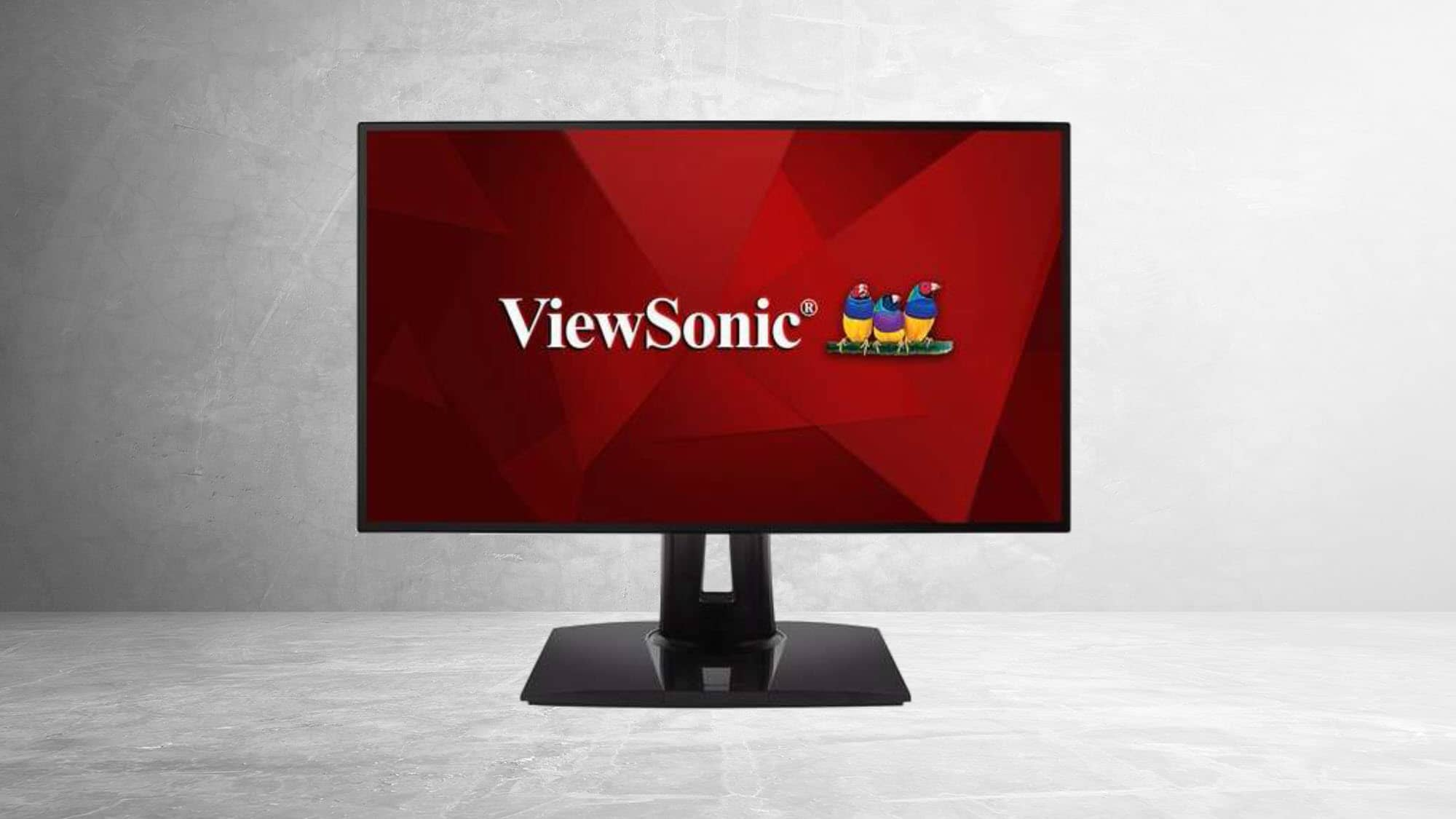
Price: $299
Specifications:
- 24-inch screen
- 1920 x 1080p FHD resolution
- Adjustable viewing presets
- IPS technology
Pros:
- Fast refresh rate
- Excellent color accuracy
- Ergonomic design
Cons:
- None
Key Benefits
- Fast refresh rate
- Outstanding color accuracy
- Ergonomic design for comfortable viewing during long trading sessions
- Adjustable viewing presets
- IPS technology for consistent clarity
The ViewSonic XG2431 is a valuable addition to any trading setup.
Rating:
- Resolution: 4/5
- Design: 4.5/5
- Performance: 5/5
- Connectivity: 4/5
3. The Samsung CF396 Curved LED Monitor
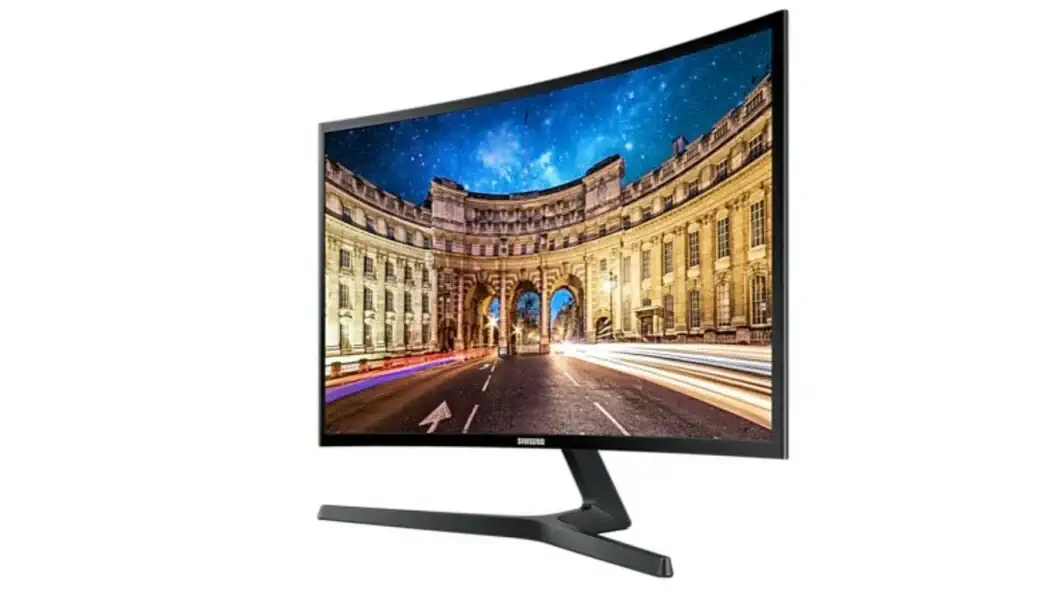
Price: $119
Specifications:
- 23.5-inch screen
- 1920 x 1080p resolution
- AMD FreeSync
Pros:
- Curved design for immersive viewing
- Low input lag
- Eye saver mode
Cons:
- Limited viewing angle adjustment
Key Benefits:
- Curved screen for an immersive viewing experience
- Low input lag for real-time updates
- Eye saver mode to minimize eye strain during long trading sessions
One downside is the limited viewing angle adjustment, but overall, the Samsung CF396 Curved LED Monitor is a solid option for traders seeking an immersive display.
Rating:
- Resolution: 4/5
- Design: 4/5
- Performance: 4.5/5
- Connectivity: 3.5/5
4. The BenQ Mobiuz EX3410R
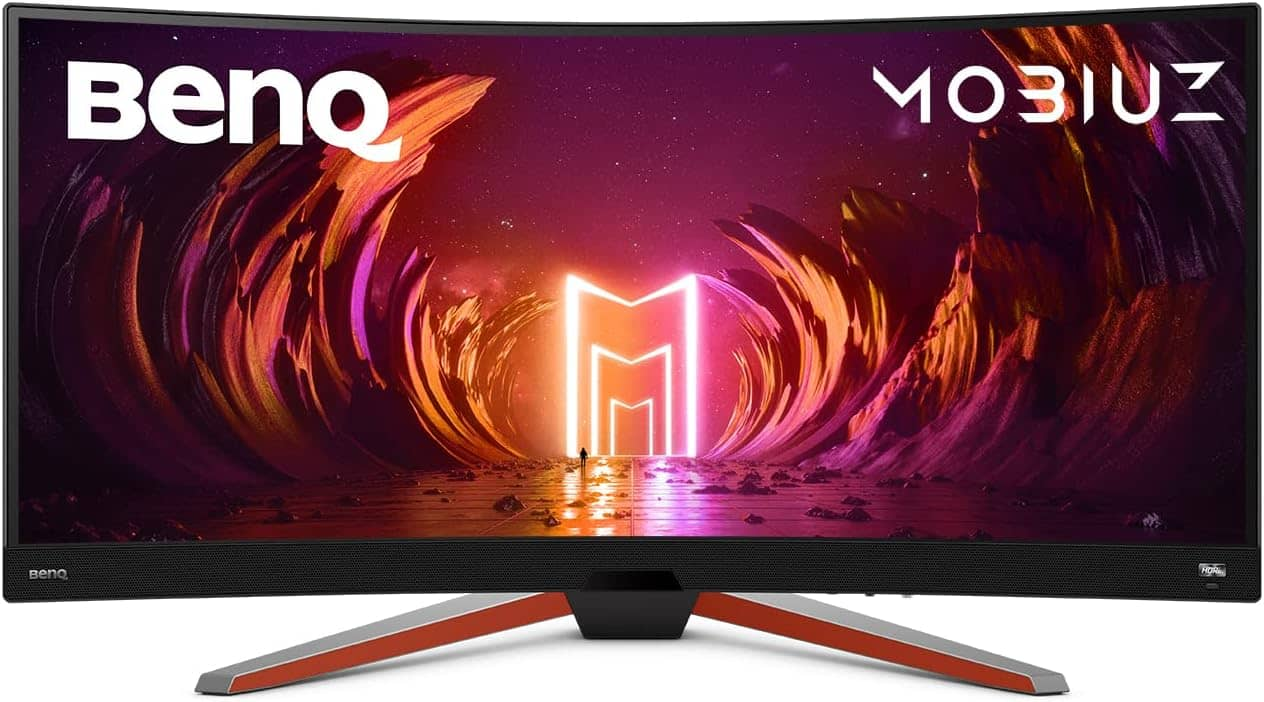
Price: $499
Specifications:
- 34-inch curved screen The resolution is 3440 x 1440. That’s quite a sharp image!
- 144Hz refresh rate
Pros:
- High-performance monitor
- Curved screen for immersive viewing
- Excellent color reproduction
Cons:
- Poor Delta E score
- Middling HDR implementation
- No USB-C or HDMI 2.1
Key Benefits:
- Its curved screen and impressive resolution provide an immersive viewing experience
- The fast refresh rate ensures smooth and responsive visuals
- Excellent color reproduction, making it suitable for creative applications as well. However, it does have some drawbacks, such as a poor Delta E score and middling HDR implementation. Additionally, the lack of USB-C or HDMI 2.1 connectivity may be a concern for some users.
Rating:
- Resolution: 4.5/5
- Design: 4/5
- Performance: 4/5
- Connectivity: 3/5
5. The LG 34″ Screen
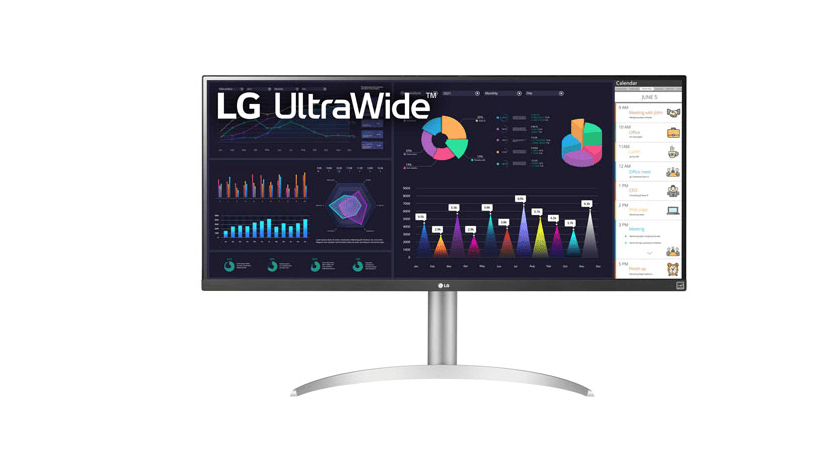
Price: $499
Specifications:
- 34-inch screen
- 2560 x 1080p Full HD resolution
- AMD FreeSync
Pros:
- Ultrawide monitor
- High resolution
- Ergonomic design
Cons:
- Stand takes up lots of space
- Casing feels cheap
- Speaker is terrible
Key Benefits:
- Versatile, high-resolution LG 34” Screen ultrawide monitor is your ideal choice.
- Expansive screen size and high resolution, the LG 34” Screen provides ample screen space for multitasking, allowing you to view multiple charts and windows simultaneously. T
- An ergonomic design ensures comfortable viewing during long trading sessions. However, the stand takes up a significant amount of desk space, and the casing feels somewhat cheap. The speaker quality is also subpar, but these drawbacks do not overshadow the excellent visual performance and overall value of the LG 34” Screen.
Rating:
- Resolution: 4/5
- Design: 3.5/5
- Performance: 4/5
- Connectivity: 4/5
Key Factors to Consider When Choosing the Best Monitors for Trading
Before exploring the world of trading monitors, it’s important to grasp the key factors that should guide your decision.
In the following sections, we will discuss the importance of:
- Screen size and resolution
- Ergonomic design and adjustability
- Refresh rate and response time
- Connectivity and ports
When choosing the perfect trading monitor, it’s essential to consider the best monitors for trading available in the market.
The Importance of Screen Size and Resolution
The clarity and efficiency of your trading experience largely depend on the screen size and resolution. A larger screen size and higher resolution enable you to view more charts and data simultaneously, allowing you to track multiple markets and make informed decisions more efficiently.
Additionally, a high-resolution monitor can provide clearer and more accurate visuals, ensuring that you have the best possible view of the market data at your disposal.
For most traders, a monitor with a screen size of 24 to 34 inches and a screen resolution of at least Full HD (1920 x 1080p) is recommended. This size range provides a good balance between screen space and desk real estate, while a high-resolution display ensures crisp and clear visuals.
Ultimately, the best size and resolution for your trading monitor will depend on your unique needs and preferences.
Ergonomic Design and Adjustability
Comfortable and efficient trading sessions are largely dependent on ergonomic design and adjustability.
A monitor with an adjustable stand allows you to find the most comfortable viewing angle, reducing eye strain and fatigue during long trading sessions. The ergonomic features such as swiveling, tilting, and height adjustment can help you optimize your trading setup for maximum comfort and efficiency.
In addition to adjustable stands, some trading monitors also offer features like blue light filter technology and flicker-free technology. These features can help reduce eye strain and protect your vision during extended periods of screen time.
When selecting a trading monitor, prioritize options with ergonomic monitors’ design and adjustability to ensure a comfortable and productive trading experience.
Refresh Rate and Response Time
Choosing a trading monitor requires considering factors like refresh rate and response time, which directly influence real-time updates and smooth visuals.
A higher refresh rate ensures that your monitor can keep up with the fast-paced trading environment, while a faster response time reduces blur, providing a sharp and clear display of market data.
When selecting a trading monitor, look for options with a refresh rate of at least 60Hz and a low response time. These specifications will ensure that your monitor can provide real-time updates and a smooth visual experience, allowing you to make more informed decisions and enhance your overall trading performance.
Connectivity and Ports
To ensure compatibility with various devices and multi-monitor setups, connectivity, and ports are key considerations. Make sure it has the necessary ports and connections to accommodate your specific needs.
Common connectivity options include HDMI, DisplayPort, and VGA ports, which allow you to connect your monitor to various devices, including laptops, desktops, and gaming consoles.
In addition to basic connectivity options, some trading monitors also offer USB ports, which can be useful for connecting peripherals like keyboards, mice, and external storage devices.
Consider your current and future connectivity needs to ensure that your monitor can seamlessly integrate into your trading setup.
Summary
Investing in a top-quality trading monitor is essential for making informed decisions and achieving success in the stock market.
With a wide range of monitors available in 2023, carefully considering factors such as screen size, resolution, ergonomic design, refresh rate, and connectivity will help you find the perfect monitor for your trading needs.
By investing in the right monitor, you can elevate your trading game and maximize your success in the fast-paced world of stock trading.
Frequently Asked Questions
What is the best size monitor for traders?
For traders, the best monitor size is 27-inch with 4K resolution for a clear and sharp view of all your trades.
Which monitor is best for trading curved or flat?
For trading, a curved monitor may be best since it provides a wider field of view, better contrast, less distortion, and less glare, ultimately helping reduce eye strain.
How many monitors are needed for trading?
A recommended setup for trading is to start with 4 monitors and gradually work your way up, if necessary. 2-over-2 works best for an array of 4 monitors, offering great efficiency.
Why do traders use 3 monitors?
Traders use 3 monitors for improved multitasking, allowing them to track multiple markets, charts, and news sources simultaneously. This makes it possible to view and analyze multiple aspects of the market at once, enabling them to make better trading decisions and manage more trades.

